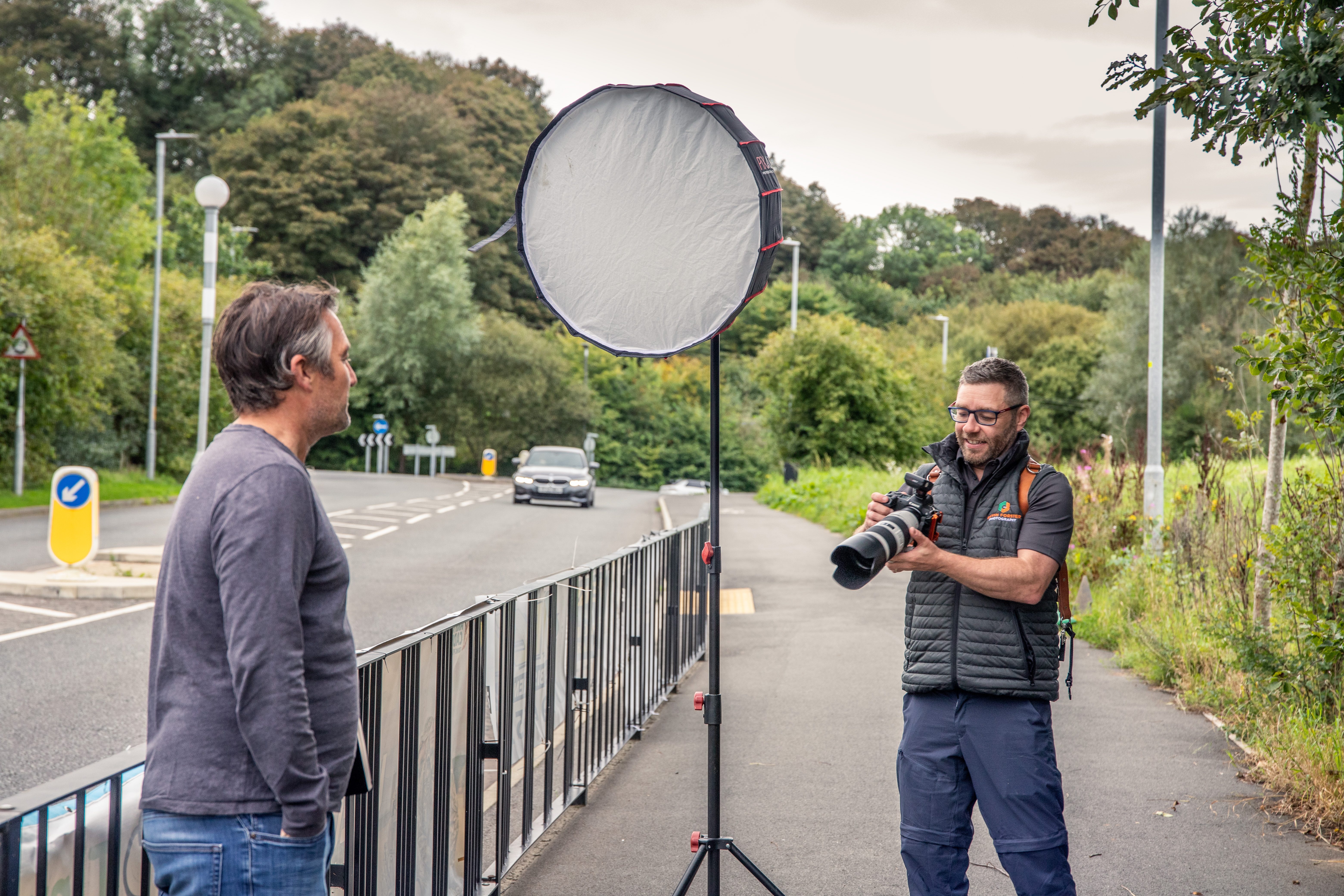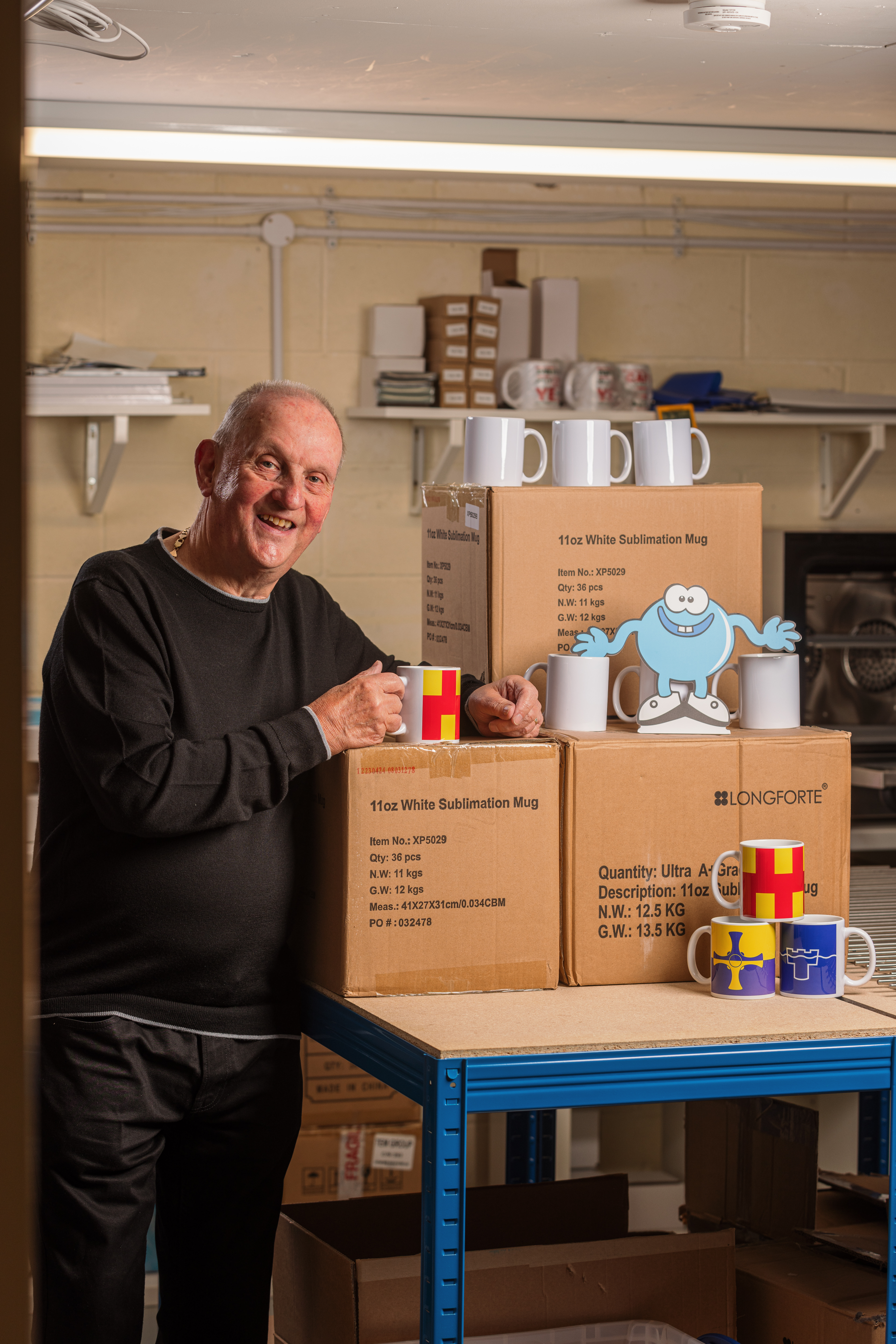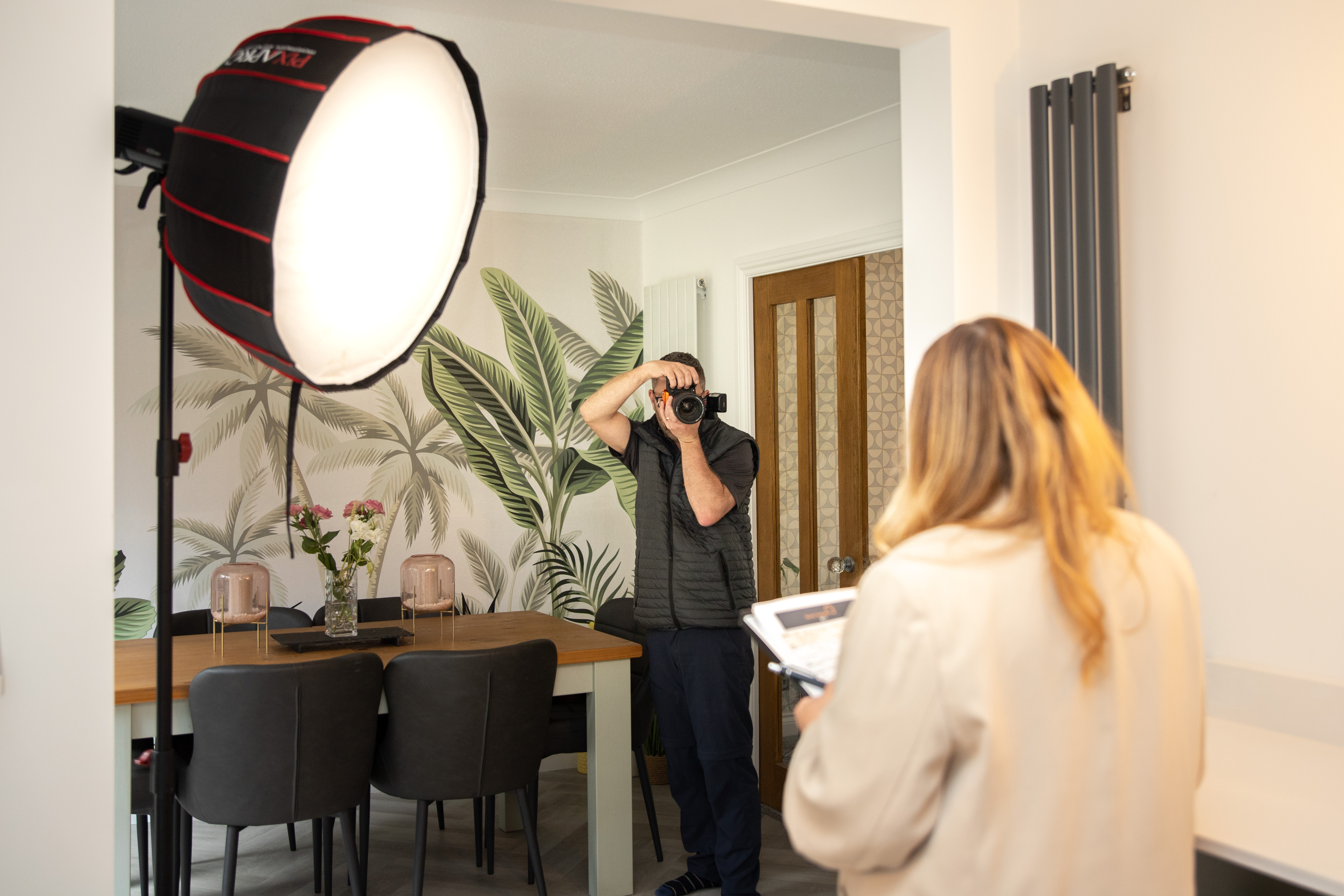Shoot like a pro: The cover shot

Gavin Forster finds it a challenge to define exactly what kind of photographer he is. While there are certainly some types of assignment that populate his calendar more regularly than others, he admits that it can feel uncomfortable to brand himself as shooting one specific genre.
This is the case for many professional photographers today, as the market fluctuates and adapts to current creative requirements, client budgets and customer expectations. While at one time it may have been easier to call oneself a ‘portrait photographer’ or ‘wedding and events photographer’, today this can, at worst, limit your appeal to clients and, at best, simply not represent your interests and full skillset.
As pro photographers we are constantly learning as new clients and conditions present themselves. Many assignments call for much more than simply taking a series of portraits or capturing a building. This is perfectly demonstrated by the shoots on which I’m joining Gavin today.

As he meets me in the charming town of Prudhoe, a few miles up the Tyne Valley from Newcastle in England, he explains that we shall be shooting three subjects today, all for a very specific purpose.
He has been commissioned to capture editorial images for Prudhoe Business, a new magazine that profiles local establishments serving the surrounding community. As an editorial shoot, this will call on many of Gavin’s skills of using space and lighting, as he works in some difficult environments. I ask how he normally plans for a shoot such as this and inteprets any brief he receives.
“It all depends on the client, but adaptability is key. There could be a very tight brief but even on the jobs where this is the case, if something jumps out of me I’m gonna shoot it. So if I see something that is a slight variation on that brief but I think it’s worth doing because of the context, and I feel it could work if time allows, I’ll throw those shots in as well.
“How I plan all depends on the context of the shoot because, sometimes, on our shoots for big companies they’ve asked for something specific which, for various reasons might not be completely achievable. Outside factors like roadworks might mean I can’t shoot a building straight on or capture it completely. I know I still have to get something for the client to be happy, so I explain what I’ve done and why.”

We arrive at the headquarters of AS Design, the publisher of the magazine, and Gavin starts to unload his lighting gear.
“If I do get into a discussion with a client beforehand, I’ll ask as many questions as I can. That being said, I don’t ask so many [that] it overcomplicates the process – you don’t want to tie yourself in knots. You’ve got to be able to go with the flow once the shoot begins.”
Every job you do is an interview for the next one. If people like you, the work will keep coming
Our first sitter for the day arrives and, with a quick confirmation from director Alan of the last-minute editorial requirements from the magazine layout, Gavin heads outside. With a magazine shoot such as this, the challenge is the number of interested parties. Gavin’s client is the magazine publisher, but it is its clients that Gavin is photographing. With so many people involved, it’s important to manage expectations.
“Everyone has an idea in their heads of what the shots should look like. This can be difficult if the brief is a bit wide and a bit woolly. Everyone might be happy, but there is a chance your idea might not be what everyone is looking for. You’ve got to let everyone know what is possible and what isn’t, early, to iron out their requests.”

Using a single light, Gavin captures several shots of the subject working to include recognizable landmarks, while excluding the busy road beside us from his shots. I ask what the key goals should always be for editorial work.
“It’s slightly easier as I’ve worked with these guys before, but if this was a new client and a different magazine, I’d be researching the type of content that has been featured before so that I could match the requirements stylisitically. This includes color temperature, camera angle, lighting and so on.
“I always shoot RAW and capture both orientations. I also leave about an inch of cropping space around the subject, so the image can be adjusted to fit the page. Your camera might capture images in one shape, but the shot might be shown in square format or circles in the magazine.”

We wrap up the first shoot and head inside for the second. This time, Gavin is to capture a portrait in a small interior space under office-style lighting. He uses two external strobes to control the ambient light. The client’s products are as much of a subject for this story, so Gavin is careful to compose his images to capture the context of the magazine feature.
When working with a chain of clients, as is the case on a magazine shoot like this, I ask how easy it is to reschedule sessions where this becomes unavoidable.
“It very much depends on the publication and the time of year. In the summer a rearrangement could be that same week, because the weather won’t change much, but in winter it might be more difficult. This can be a problem where a story is very time-dependent. If you have to delay a shoot by several weeks it might have to feature in a different issue, by which time the subject’s business logo has changed, or the story is no longer relevant. It’s better to see how you can make something work in the prearranged timeframe.
“Ask how you can recreate scenery or lighting, so that if you have to move the shoot, you can still get shots that hit the brief without much delay. Instead of shooting outside, for example, shoot in a conservatory with greenery behind the subject, and be careful with the composition to hide unwanted background detail. Again it’s about having a conversation about deliverables – ask the client what is most important to them, timing with deadlines or getting a specific pre-arranged shot.”

Next, we pack up the gear and head on-location to the home office of local estate agent, Kirsty Hodgson. Kirsty invites us inside and Gavin captures narrative images of her at work. He uses the space available to great effect, showing his subject in context.
We then head to one of Kirsty’s properties. A challenge presents itself in the form of a series of parked cars in the scene, but Gavin knows he has to capture something that balances time constraints and the required images. He captures several shot variants to cover individual choices on the part of the magazine designer.
I ask if primes or zooms are his preference for editorial jobs.
“I’m used to working with primes, from experience of shooting weddings. I can still get a whole job done shooting only on a 50mm. However, as I’ve taken on more commercial work, I like the flexibility of zooms, especially on mirrorless cameras, where sensor dust becomes a real problem if you’re changing lenses every five minutes.”
As we drop Kirsty back at her office, Gavin divulges some parting advice.
“Every job that you do is an interview for the next job. You have to be personable above all else. If people like you, the work will keep coming. For editorial, you’re shooting for the magazine, who is your client, but also for their clients – the readers, who are used to seeing a certain style. You’ve got to be adaptable, think on your feet, direct the shoot, and keep the team informed of what you’re planning.”


Although an experienced 'commercial photographer', Gavin works across many genres, from events to corporate portraiture. Based in the northeast of England, Gavin’s clients are located across the UK and internationally. He has undertaken commissions for Just Eat, BuzzFeed, British Cycling, Prostate Cancer UK and Komodo, among others.
Gavin's gear

Main camera
Gavin currently shoots with the Canon EOS R5 as his main body, in this case mounted with the EF 70-200mm f/2.8L IS III USM telephoto zoom lens, via an EF-EOS R adaptor. The longer focal length enables him to stand further back from his subject and compress perspective. On commercial and magazine shoots, he has also been using a double-shoulder strap, which is useful when carrying heavy equipment for long periods.
Off-camera flash
While a speedlight would offer greater portability, Gavin uses strobes for outdoor shoots such as this for the extra power they provide. They enable him to overpower the ambient light and create some direction to the shot, while controlling shadow density.
Light modifier
A softbox like the Pixapro model Gavin is using helps to shape the light and soften it, enabling a more natural blend with the environmental light. An umbrella can also work, although a portable softbox offers a better balance of directional control. On some shoots today, Gavin also employed a strip bank as a back/rim light for subject separation.
Light stand
A telescopic air-cushioned stand is an essential accessory for correct placement of your main light. Gavin’s enables him to place the light source above and at an angle to his subjects, in place of the sun, creating a realistic look to his portrait shots. These can be weighted on windier days to secure the strobe.
Why Gavin likes to buy and sell used kit

"You’ve got to do your research to know what you need for each job you shoot," says Gavin. "Yes, it would be nice to have every bit of kit, but you’ve got to justify every purchase for your business. If a client specifically ask me to shoot something, then I’ll consider it, but like many pro photographers, I accumulate lots of kit and it just sits there.
"In both these cases, I’ll look on sites like MPB. For specialist items, you can guarantee there will be quite a supply of used products. I also recently sold a load of items I hadn’t used for ages, so shop around."
3 top tips from MPB

1) Invest wisely in gear
As a photographer, your equipment plays a crucial role in your editorial work. Invest wisely in cameras, lenses, and accessories that match your shooting style and the demands of editorial photography. MPB offers a platform for used gear, enabling you to access high-quality kit without breaking the bank.
2) Master lenses
Lenses are the eyes of your camera, and understanding their capabilities is essential. Primes offer sharpness and creativity, while zooms provide versatility. Experiment with various focal lengths to find what suits your storytelling needs best.
3) Practice Storytelling
Editorial photography is about more than just taking pictures; it’s about telling a compelling story. Develop your narrative skills by focusing on the context, emotions, and details that convey the essence of your subject. Capture moments that evoke emotions and engage your audience.
Get the Digital Camera World Newsletter
The best camera deals, reviews, product advice, and unmissable photography news, direct to your inbox!
Digital Camera World is one of the leading authorities on camera and photography news, reviews, techniques, tutorials, comparisons, deals and industry analysis. The site doesn't just specialize in cameras, but all aspects of photography, videography and imaging – including camera phones, gimbals, lenses, lighting, editing software, filters, tripods, laptops, printers, photo books, desks, binoculars and more.
Whether you're using, looking to buy or trying to get the most out of a compact camera, action camera, camera drone, cinema camera, beginner camera or professional camera, Digital Camera World has a roster of experts with combined experience of over 100 years when it comes to cameras, photography and imaging.

